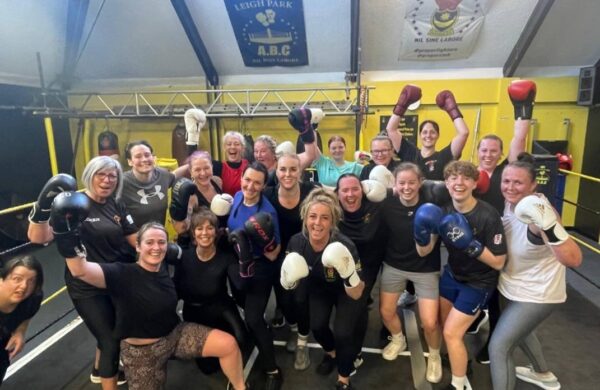
Belonging Starts With Inclusion: Lessons From A Local Women’s Boxing Course
Learnings from a local, women's boxing course.

Date: 23 October 2025 Author: Energise Me
Small changes in physical activity sessions can make a big difference for those with ADHD. Local Community Inclusion Officer, Juliet, has shared some simple and practical ways to put inclusion at the heart of what you do.
Everyone deserves to feel safe, supported and confident when accessing physical activities to boost their health and wellbeing. As the Community Inclusion Officer at Horizon Havant, I work closely with local communities. Taking the time to understand their experiences and helping them find programmes at our leisure centre that suit them.
October is ADHD Awareness Month; a great time to shine a light on how we as a sector can create welcoming and inclusive environments for those with additional needs.
ADHD (Attention Deficit Hyperactivity Disorder) comes with amazing strengths like creativity, energy and enthusiasm. But it can also affect focus, organisation and sometimes emotional regulation. ADHD looks different for everyone, so a flexible and understanding approach is key.
Physical activity can make a huge difference for people with ADHD. When we move, our brain releases dopamine. This ‘happy hormone’ boosts mood and focus. This can help with self-regulation too, especially when movements are repetitive. Plus, being active – especially with others – instils a sense of belonging that everyone needs.
I recently learned that the current waiting list for an ADHD diagnosis can take up to 8 years. Think of the mental impact that may have. Physical activity can have a massive role in managing symptoms. So, we need to make sure our spaces can accommodate and play their part, whether it’s for children or adults.
If you can, spend a little time learning a bit more about your participants. A quick chat about what they enjoy, what helps them feel comfortable or what’s difficult in other spaces can really help you plan your approach.
At Horizon, we use simple visual handouts alongside verbal instructions. For example, in the Wellbeing Hub, people get a sheet showing each exercise with short, clear instructions. That way, participants can see and hear what’s expected. This is really helpful for anyone who struggles to remember long explanations.
Build in the option for short breaks or quick rests if anyone becomes overstimulated or distracted. Encouraging people to pause helps everyone feel more relaxed.
Think ahead about how you’ll explain the session. Structure can really help people with ADHD to focus.
Try to offer options. It might be as simple as letting participants choose which activity they want to start with or what piece of equipment they use. Having some control helps people feel calm and invested.
Provide an overview of what’s going to happen during your session. In our junior gym sessions, for example, the coach explains, “we’ll do this exercise for five minutes,” and the timer shows how long is left. Participants know exactly what to expect, which makes it easier for them to stay focused.
Leisure centres can be busy, noisy and bright which can feel overwhelming to some. Gosport Leisure Centre created a ‘Sensory Map’ so visitors know what sounds and smells to expect. Maybe you could also give participants a heads-up about what to expect?
Remember that someone new to your class might be feeling anxious. A friendly hello or reassurance that it’s fine to take breaks goes a long way. Our team also keeps an eye out for anyone wearing a Sunflower Lanyard, which signals a hidden disability. And if someone looks unsure, we simply ask, “how can I help?”
For me, reflection is a really key tool. After completing a task or talking to a community group, if I think ‘oh gosh that didn’t work’, I don’t give up. I reflect and think: what’s happened? What would my community want me to do? Then I’ll turn to colleagues to draw advice from them.
As part of this, I love the “Stories of Change” template as it helps visualise what’s working and why.
At Horizon Havant, we’re learning all the time. So, never stop taking the time to expand your knowledge because the outcome is worth it. A few thoughtful adjustments can make physical activity more inclusive for everyone.
If you’re curious about ADHD, here are some of my go-to sites when looking for more information.
A non-profit organisation founded over thirty years ago to help adults with ADHD to lead better lives.
Visit siteCHADD's vision is to create a world that recognises, incorporates, and celebrates the strengths of those with ADHD.
Visit siteA resource for families and adults living with ADHD and related conditions, and for the professionals who work with them.
Visit siteThe National Institute of Mental Health (NIMH) leads research on mental disorders.
Visit siteSubmit a We Can Be Active Win to inspire others to do the same and share any learning you wish you’d known!

Juliet joined Horizon Leisure Centre as Community Inclusion Officer five months ago. As a SEND parent herself, Juliet knows the importance of inclusion and is passionate about making physical activity a place for everyone.
“I was always told to be kind, and kindness goes so far. I think if you’re kind and you take the time to actively listen to people, that’s how you provide a non-judgemental space.”